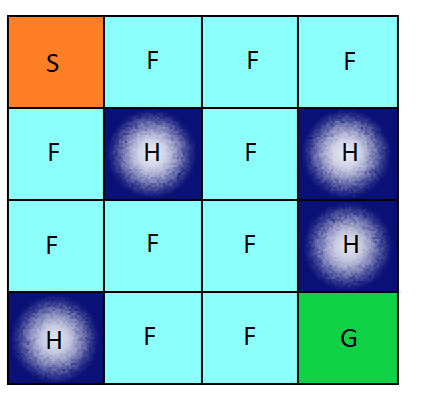EDIT: You may have trouble opening the .ipynb file, try the .py file instead they contain the same code.
In this repository I try to implement Deep Q Learning algorithm in the FrozenLake environment.
In this algorithm, we use a Q table. Values in this table are based on exploration and exploitation strategies. The agent takes an action based on the values on our Q table and moves towards the goal. Once the agent changes from one state to another the calculation is done with the following equation:
Q(s,a) => Q(s,a) + lr [R(s,a) + gamma * max Q(s',a') - Q(s,a)]
Along the way, the agent gets a reward or a penalty. More in-depth knowledge about this algorithm can be found here.
Imagine, you are standing on a frozen lake. The lake is not all frozen, there are some parts where the ice is very thin. Your goal is to go from place S to G without falling into the holes.
Here,
- S --> Source
- G --> Goal
- F --> Solid Ice (Agent can stand)
- H --> Hole (Agent falls through)
More about the FrozenLake environment can be found here.
- Python3
- Keras (running TensorFlow in the backend)
- gym -> details here
- random
- numpy
Here my goal is to make the agent perform better with time as it learns from exploring the environment. The higher values on the Qtable are going to make the agent perform better and help to reach the goal with better rewards.
